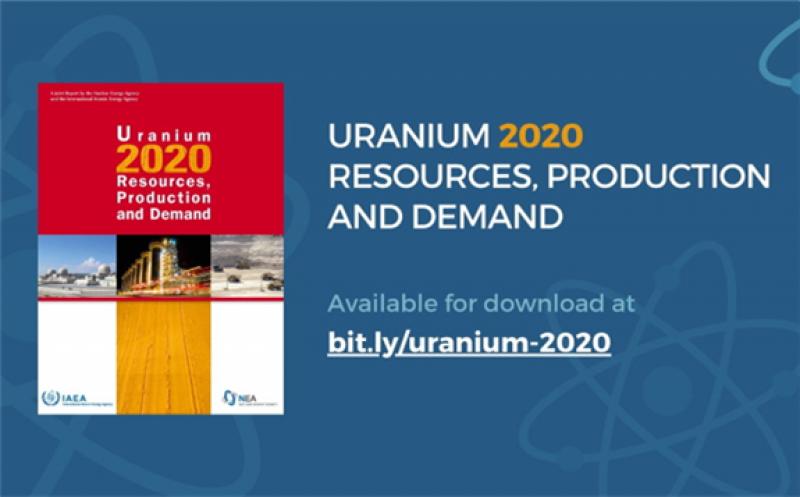Sufficient uranium resources exist to support the long-term, sustainable use of nuclear energy, according to the latest edition of the OECD Nuclear Energy Agency (NEA) and International Atomic Energy Agency (IAEA) joint report on uranium resources, production and demand. However, the impact of the ongoing COVID-19 pandemic on the industry and recent reductions in uranium production and exploration could affect available supplies.

Known as the Red Book, Uranium 2020: Resources, Production and Demand was published yesterday. It is the 28th edition of the report, currently updated every two years, and provides a reflection of information current as of 1 January 2019. The report provides analyses and information from 45 uranium producing and consuming countries based on official data from 31 countries and national reports prepared by the NEA and IAEA on a further 14. As well as assessing uranium supply and demand in 2018, it includes projections to 2040.
The report shows that global uranium resources have increased, but more modestly than in previous years. Total identified resources recoverable (reasonably assured and inferred) as of 1 January 2019 amounted to 6,147,800 tU in the Continuing a downward trend over several years, worldwide domestic exploration and mine development expenditures decreased to approximately USD500 million in 2018, a significant drop from USD2 billion in 2014. This trend is not expected to result in shortfalls but could signal market issues in the longer-term, the Red Book says.
Global uranium mine production decreased by 10.8% from 2017 to 2018 due to production cuts resulting from poor market conditions, but increased slightly by 1% to 54,224 tU in 2019. Production by in-situ leaching accounted for over 55% of total global uranium production in 2018 and approximately 57% in 2019. Major producing countries, including Canada and Kazakhstan, limited total production in recent years in response to a sustained depressed uranium market. Uranium production cuts have been unexpectedly deepened with the onset of the global COVID-19 pandemic in early 2020. The report suggests that annual production capacity could increase relatively quickly by bringing idled mines back into service if market conditions improve.
Reactor demand
The Red Book also provides projections for nuclear power generation uranium requirements up to 2040, as well as a comprehensive assessment of the uranium supply and demand relationship. In 2018, the 450 commercial nuclear power reactors in operation worldwide, with a net generating capacity of 396 GWe, required about 59,200 tU annually. Depending on developments in the nuclear energy sector, reactor-related uranium requirements could range from 56,640 tU per year in a low demand scenario to 100,224 tU per year in a high demand scenario by 2040.
"The currently defined resource base is more than adequate to meet low and high case uranium demand through 2040, but doing so will depend upon timely investments to turn resources into production," the report says. Meeting high case demand requirements up to 2040 would consume about 28% of the total 2019 identified resource base recoverable at a cost of
"Future supplies would benefit from timely research and innovation efforts to further improve uranium exploration and develop new, more cost-effective extraction techniques," the report says. "Strong market conditions will be instrumental in achieving the required industry investment to develop and deploy new technologies."
"In the wake of recent significant reductions in uranium production and the effects of COVID-19 pandemic, the coming challenges are likely to be those associated with constrained investment capabilities, as a result of depressed market conditions that will push the industry to optimise its activities still further," the Red Book concludes.